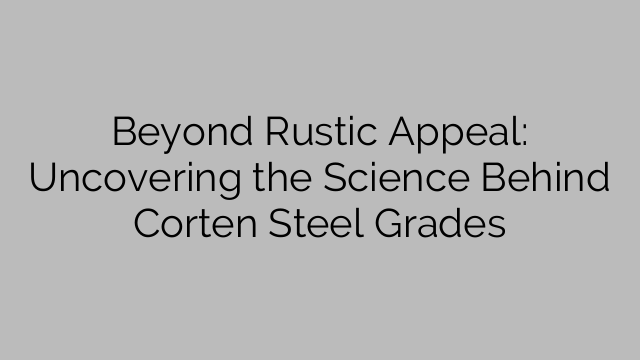Corten steel, also known as weathering steel, was first developed in the 1930s by the United States Steel Corporation. Its primary use was in railroad coal wagons, where its ability to withstand harsh weather conditions proved invaluable. Over time, architects and designers recognized the unique aesthetic qualities of corten steel, and it began to be used in buildings, bridges, and outdoor sculptures.
What makes corten steel grades unique is their composition. The main element in corten steel is iron, but it also contains small amounts of chromium, copper, and phosphorus. These additional elements contribute to the material’s weathering properties, allowing it to form a protective layer of rust when exposed to the elements.
The rust layer, also known as the patina, acts as a barrier against the penetration of moisture and oxygen, preventing corrosion and extending the lifespan of the steel. This natural protection eliminates the need for additional coatings or maintenance, making corten steel grades a cost-effective and eco-friendly choice.
While corten steel generally possesses similar properties across different grades, the exact composition can vary, leading to variations in its weathering characteristics. For example, some corten steel grades are specifically designed for applications in marine environments, where exposure to saltwater and aggressive atmospheric conditions can accelerate corrosion. These grades may contain higher amounts of copper, which enhances their resistance to the corrosive effects of seawater.
On the other hand, some corten steel grades are developed for high-temperature applications, such as industrial chimneys or exhaust systems. These grades may have a higher chromium content, which improves their resistance to thermal fatigue and oxidation at elevated temperatures.
Understanding the specific corten steel grade suitable for a particular project is crucial for achieving the desired outcome. Architects and designers need to consider the specific environmental conditions, loads, and performance requirements to select the most appropriate grade of corten steel.
Additionally, corten steel grades can be manipulated and fabricated to suit various design needs. They can be formed into different shapes and profiles, allowing for endless possibilities in structural and artistic applications. Corten steel can be easily welded, bolted, or riveted, making it a flexible material for construction and fabrication.
In conclusion, while the rustic appeal of corten steel may be what initially captures our attention, it is the science behind its grades that sets it apart as a remarkable material. The carefully crafted compositions of corten steel grades result in its unique weathering properties, making it a reliable and durable choice for architectural and industrial projects. Whether it’s withstanding extreme weather conditions or adding a touch of elegance to a building facade, corten steel grades continue to prove their worth in the world of design and engineering.
[ad_2]

